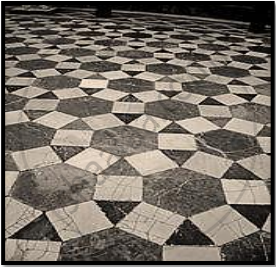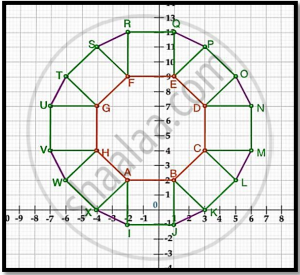Advertisements
Advertisements
Question
ABCD is a parallelogram with vertices \[A ( x_1 , y_1 ), B \left( x_2 , y_2 \right), C ( x_3 , y_3 )\] . Find the coordinates of the fourth vertex D in terms of \[x_1 , x_2 , x_3 , y_1 , y_2 \text{ and } y_3\]
Solution
Suppose the coordinates of D be (x, y).
Since diagonals of a parallelogram bisect each other.

Therefore the midpoint of AC is the midpoint of BD, i.e
\[\Rightarrow x_1 + x_3 = x_2 + x \text{ and } y_1 + y_3 = y_2 + y\]
\[ \Rightarrow x = x_1 + x_3 - x_2 \text{ and } y = y_1 + y_3 - y_2 \]
\[\text{ Thus coordinates of D are } \left( x_1 + x_3 - x_2 , y_1 + y_3 - y_2 \right)\]
APPEARS IN
RELATED QUESTIONS
Show that the points (−3, 2), (−5,−5), (2, −3) and (4, 4) are the vertices of a rhombus. Find the area of this rhombus.
If G be the centroid of a triangle ABC, prove that:
AB2 + BC2 + CA2 = 3 (GA2 + GB2 + GC2)
Find the ratio in which the point P(m, 6) divides the join of A(-4, 3) and B(2, 8) Also, find the value of m.
The ordinate of any point on x-axis is
Two points having same abscissae but different ordinate lie on
Show that the points (−4, −1), (−2, −4) (4, 0) and (2, 3) are the vertices points of a rectangle.
If the points P, Q(x, 7), R, S(6, y) in this order divide the line segment joining A(2, p) and B(7, 10) in 5 equal parts, find x, y and p.
Show that A (−3, 2), B (−5, −5), C (2,−3), and D (4, 4) are the vertices of a rhombus.
Find the centroid of the triangle whose vertices is (−2, 3) (2, −1) (4, 0) .
If A(−3, 5), B(−2, −7), C(1, −8) and D(6, 3) are the vertices of a quadrilateral ABCD, find its area.
Find the value of k, if the points A (8, 1) B(3, −4) and C(2, k) are collinear.
\[A\left( 6, 1 \right) , B(8, 2) \text{ and } C(9, 4)\] are three vertices of a parallelogram ABCD . If E is the mid-point of DC , find the area of \[∆\] ADE.
If P (x, 6) is the mid-point of the line segment joining A (6, 5) and B (4, y), find y.
Find the coordinates of the point which is equidistant from the three vertices A (\[2x, 0) O (0, 0) \text{ and } B(0, 2y) of ∆\] AOB .
If the points (k, 2k), (3k, 3k) and (3, 1) are collinear, then k
If points (a, 0), (0, b) and (1, 1) are collinear, then \[\frac{1}{a} + \frac{1}{b} =\]
If A(4, 9), B(2, 3) and C(6, 5) are the vertices of ∆ABC, then the length of median through C is
Write the X-coordinate and Y-coordinate of point P(– 5, 4)
Abscissa of a point is positive in ______.
A tiling or tessellation of a flat surface is the covering of a plane using one or more geometric shapes, called tiles, with no overlaps and no gaps. Historically, tessellations were used in ancient Rome and in Islamic art. You may find tessellation patterns on floors, walls, paintings etc. Shown below is a tiled floor in the archaeological Museum of Seville, made using squares, triangles and hexagons.

A craftsman thought of making a floor pattern after being inspired by the above design. To ensure accuracy in his work, he made the pattern on the Cartesian plane. He used regular octagons, squares and triangles for his floor tessellation pattern

Use the above figure to answer the questions that follow:
- What is the length of the line segment joining points B and F?
- The centre ‘Z’ of the figure will be the point of intersection of the diagonals of quadrilateral WXOP. Then what are the coordinates of Z?
- What are the coordinates of the point on y-axis equidistant from A and G?
OR
What is the area of Trapezium AFGH?
